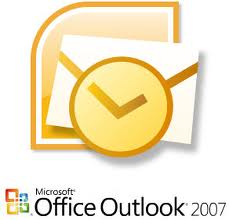
PRODUCTIVITY
Say hello to the next generation of cloud power services. You now have the power to enable your people to work from virtually anywhere, anytime, and on any device with simple, familiar collaboration and communication solutions – all backed by the proven security and guaranteed reliability you expect from Microsoft. Office 365 is the evolution of Microsoft Online Services, which has more than 40 million users in businesses worldwide.
Office 365 is the evolution of Microsoft Online Services, which has more than 40 million users in businesses worldwide. Learn more about how Microsoft Office 365 would work for you.
Cloud powers
Productivity and Collaboration
Office 365 helps connect people in new ways. Users get all the productivity benefits of Microsoft Office along with the power of cloud services. Work together in real time, both inside and outside your organisation. See other users’ availability and make it easier to stay connected and take advantage of social networking capabilities to tap into the knowledge base of your organisation.*
Access Anywhere
With Office 365 your people can more securely reach the information they need – including email, documents, contacts, and calendars – in the office or on the go. That means having a virtual office, virtually anywhere.
PC, Phone, Browser
Office 365 is designed to work with the software, devices, phones, and browsers already in your arsenal. This gives your workers the power to access information and stay productive across all means of access while maintaining security and still keeping your existing business applications.
Works with what you know
With Office 365 there is no need for you or your staff to learn new software and different tools. It’s the same Microsoft Outlook and Microsoft Office applications you use every day – now powered by and working seamlessly with Microsoft cloud services.*
*Requires subscription to Office 365 for Enterprises.
Cloud concerns
Security & Reliability
We know security is top of mind when it comes to cloud computing. That’s why Office 365 was built from the ground up for reliability, availability, and performance. Our proven service is powered by the same Microsoft email and business collaboration products that businesses have been using for decades.
– Financially-backed, guaranteed 99.9% uptime Service Level Agreement (SLA)
– Always-up-to-date antivirus and anti-spam solutions to protect email
– Safeguarded data with geo-redundant, enterprise-grade reliability and disaster recovery with multiple datacenters and automatic failovers
– Best-of-breed data centers with SAS 70 and ISO 27001 certification
IT Control & Efficiency
You need to get the most from your technology. You also need to ensure the right level of technology is available to all your staff along with the ability to adjust to meet cyclical demands. Office 365 delivers interoperable cloud services to fit your organisation’s unique needs. You have the latest updates to Office Professional Plus, Exchange Online, SharePoint Online, and Lync Online, so you deliver the latest productivity tools to your staff without having to buy new hardware and software or pay for maintenance and configurations.
– 24/7 IT-level phone support when you need it*
– Migration tools that help you get your users up and running fast and easy
– No more server patching, updating, or upgrading – Office 365 takes care of it
– Variable pricing options for accurate forecasting of IT expenditures and predictable annual costs
*Requires subscription to Office 365 for Enterprises.
Microsoft advantage
Microsoft knows business productivity. For over 20 years, we’ve been providing customers with solutions that simplify the way people communicate, share expertise, gain business insight and find information. We help make sure your people get the best productivity experience across the PC, phone, and browser for the way they work today—and the way they’ll work in the future.
Here’s how we’re different. Microsoft delivers a holistic business productivity approach to meet your ever-changing business demands. Our infrastructure gives the choice and control you need to respond to evolving business needs. You can choose from on-premise, online services, or hybrid solutions. And, because our solutions are built to work together—not as an isolated set of applications—they’ll help you make the most of your assets and eliminate costly redundancies.
To learn more, go to http://www.microsoft.com/whymicrosoft



















